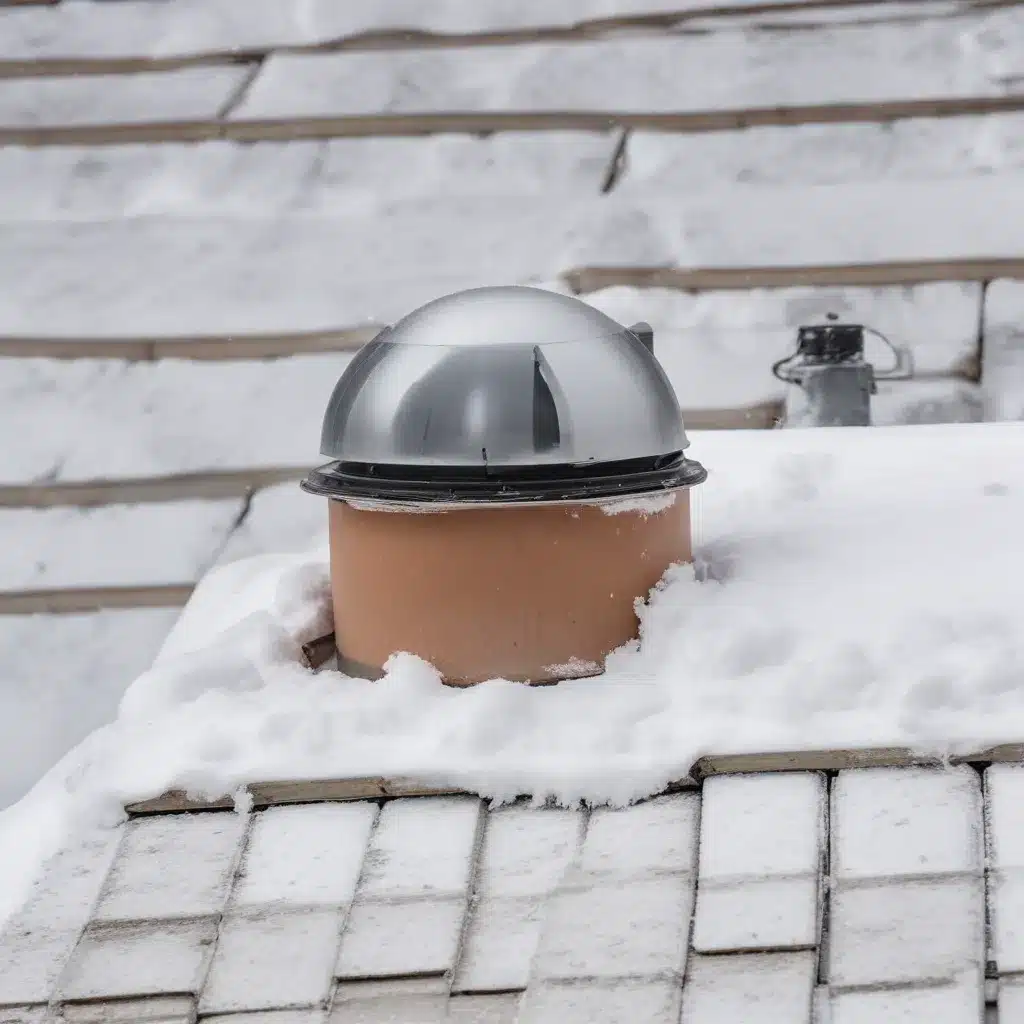
The Importance of Proper Attic Ventilation
As a seasoned roofing professional, I’ve seen firsthand the significant impact that proper attic ventilation can have on a home’s indoor air quality, especially during the winter months. Inadequate ventilation can lead to a host of problems, from excessive heat buildup to dangerous mold and mildew growth. In this comprehensive guide, we’ll explore the science behind attic ventilation, the benefits it provides, and practical solutions to improve your home’s air quality and energy efficiency.
Understanding the Science of Attic Ventilation
Attics are particularly vulnerable to extreme temperature fluctuations throughout the year. During the summer, the roof’s exposure to sunlight heats the attic space, trapping this warmth without proper ventilation. This heat can then radiate down into the living areas, forcing your air conditioning system to work harder and driving up energy costs.
In the winter, the natural rise of warm, moist air from the living spaces can seep into the attic through cracks and leaks. When this warm air meets the cooler attic surfaces, condensation occurs, leading to the buildup of moisture. Excessive moisture creates an ideal environment for mold and mildew growth, which can then infiltrate your home’s living spaces through ventilation systems and cracks.
The Benefits of Proper Attic Ventilation
Implementing effective attic ventilation strategies can provide a range of benefits that improve both the quality of your indoor air and the overall efficiency of your home.
-
Improved Indoor Air Quality: By allowing hot, humid air to escape the attic, proper ventilation helps prevent the growth of harmful mold and mildew. This, in turn, reduces the risk of respiratory issues, allergic reactions, and other health concerns for your family.
-
Enhanced Energy Efficiency: A well-ventilated attic helps keep the living spaces cooler in the summer, reducing the burden on your air conditioning system. In the winter, proper ventilation can also prevent the formation of ice dams, which can lead to costly roof damage and leaks.
-
Increased Comfort: By regulating the temperature and humidity levels in the attic, effective ventilation can help create a more comfortable living environment throughout the year, without relying on excessive heating or cooling.
Types of Attic Ventilation
There are two primary types of attic ventilation systems:
- Intake Vents: These vents, typically located at the soffits (underneath the eaves), allow cool outdoor air to enter the attic.
- Exhaust Vents: These vents, usually positioned at the roof peak or ridge, allow hot, humid air to escape the attic.
For optimal results, a balanced ventilation system that incorporates both intake and exhaust vents is recommended. This ensures that the air flow is properly regulated, creating a healthier, more efficient attic environment.
Improving Indoor Air Quality with Roof Ventilation
While addressing the attic’s ventilation needs is crucial, it’s essential to consider the overall indoor air quality of your home, especially during the winter months.
Strategies for Enhancing Indoor Air Quality
-
Source Control: The most effective way to improve indoor air quality is to identify and eliminate or reduce the sources of pollutants. This may involve sealing or enclosing sources containing hazardous materials, such as asbestos, or adjusting the operation of gas stoves to decrease emissions.
-
Increased Ventilation: Bringing more outdoor air into the home can help dilute and remove indoor air pollutants. This can be achieved by opening windows and doors, operating window or attic fans, or running a window air conditioner with the vent control open. Local exhaust fans in bathrooms and kitchens can also improve ventilation and air quality in specific rooms.
-
Mechanical Ventilation Systems: Some newer home designs feature advanced mechanical systems that bring outdoor air into the home, often with the use of energy-efficient heat recovery ventilators (HRVs) or air-to-air heat exchangers. These systems help maintain a balanced, healthy indoor environment by continuously introducing fresh air while recovering the energy from the outgoing air.
-
Air Purification: While air cleaners can be effective in removing certain pollutants from the air, their long-term performance depends on proper maintenance and the strength of the pollutant sources. It’s important to select air cleaners with high particle removal efficiency and adequate air circulation rates to ensure optimal effectiveness.
Addressing Specific Concerns
If you have concerns about indoor air quality in your home, it’s essential to take a comprehensive approach. For example, if you suspect that your home’s high levels of air leakage are contributing to poor air quality, addressing the air sealing and insulation issues may be a more cost-effective and long-term solution than relying solely on air purifiers or mechanical ventilation systems.
Similarly, if you have a damp basement or crawl space, addressing those issues should be a priority, as they can be a significant source of indoor air pollutants, such as mold and mildew.
Putting It All Together: A Holistic Approach to Roof Ventilation and Indoor Air Quality
When it comes to improving indoor air quality and energy efficiency, a holistic approach that addresses both attic ventilation and overall home performance is essential. By working with a qualified roofing contractor or building performance professional, you can develop a comprehensive plan that combines targeted air sealing, insulation upgrades, and the implementation of effective ventilation strategies.
Remember, every home is unique, and the specific solutions that will work best for your property may vary. That’s why it’s crucial to have an experienced professional assess your home’s needs and recommend the most appropriate ventilation and air quality improvements.
By taking the time to address these critical issues, you can create a healthier, more comfortable, and more energy-efficient living environment for you and your family, even during the challenging winter months. For more information or to schedule a consultation, please visit Roofers in Northampton.

